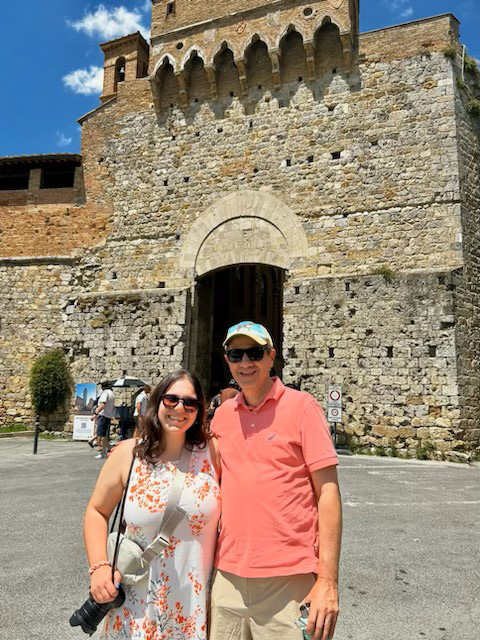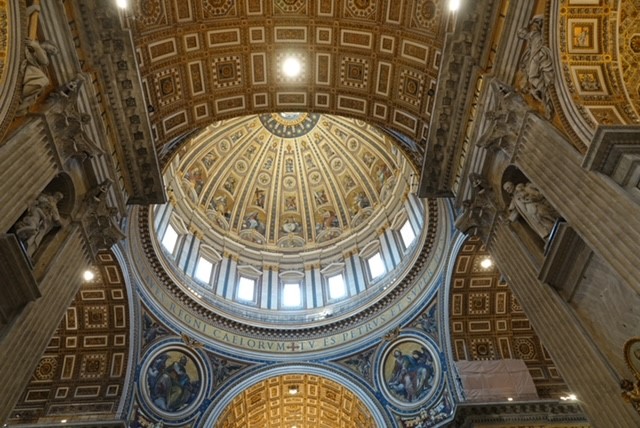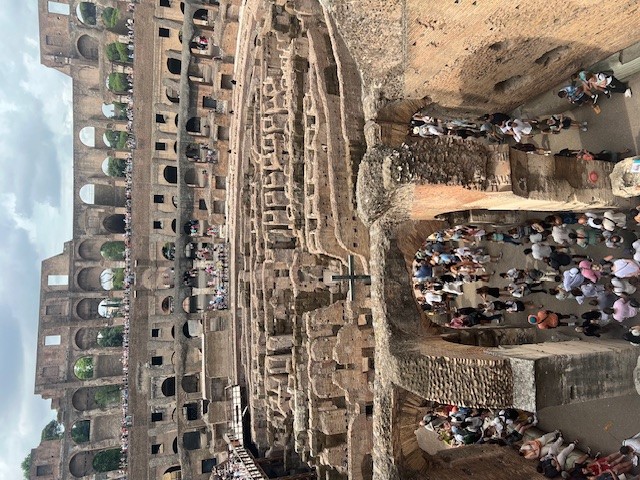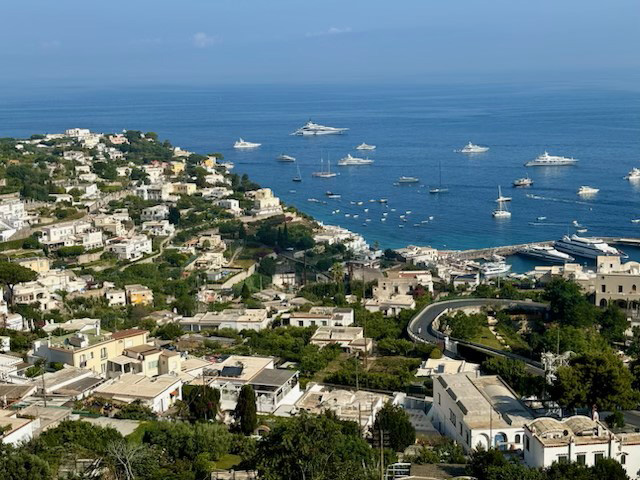In Step with History and Present in Italy
Rome is known as the Eternal City, for good reason. The designation comes to life as you trek along cobblestone streets, imagining others making similar journeys. A living history stretching back centuries and millennia exists side by side with the cosmopolitan present.
 We just returned from a family trip of a lifetime to the land of our forebears. My wife, Lynn, and I and our two adult children, Sarah and Christopher, spent 10 days basking in the wonders of Italy. Thanks to a full game plan my wife and daughter organized, we moved seamlessly from place to place and city to city, from Rome to Florence and Sorrento, with seaside travels to Capri and Amalfi, and a last-day visit to Pompei.
We just returned from a family trip of a lifetime to the land of our forebears. My wife, Lynn, and I and our two adult children, Sarah and Christopher, spent 10 days basking in the wonders of Italy. Thanks to a full game plan my wife and daughter organized, we moved seamlessly from place to place and city to city, from Rome to Florence and Sorrento, with seaside travels to Capri and Amalfi, and a last-day visit to Pompei.
We moved around so much and at such a walking pace that I initially had a hard time keeping up, or at least my aching feet did. Switching shoes saved my soles, aided by the fact the second half of the journey featured less walking and more riding in vans and taxis, trains, ferries, and trams. It helped to travel with 20-somethings who could handle most heavy lifting.
History is literally all around you in Rome, with the Colosseum and Roman Forum front and center. There and elsewhere in Italy, a sincere appreciation exists for what has led to our present time. You are literally standing atop and eye to eye with cultural and historical treasures. They are part of the fabric of today’s world, and provide livelihoods for guides, taxi drivers, and other workers.
A Catholic cannot visit Rome without experiencing Vatican City and St. Peter’s Basilica. Touring the Vatican Museums, with their amazing array of sculptures, tapestries, and other art and artifacts, brings one back to before the beginning of Christianity. The Sistine Chapel is honestly like a dream that unfolds differently for each person. Photos are not permitted, preserving the experience’s personal and intimate nature.
 The Vatican visit culminates at St. Peter’s. Nothing can adequately prepare you for the majesty that awaits. If you are going for a second time, like me, the experience is somehow even better, because you are more able to comprehend the awesome beauty and scale. Even with Bernini’s altar columns and Michelangelo’s Pieta shrouded for work ahead of the 2025 Holy Year, an abundant visual feast exists all around. Simply beholding the basilica’s magnificent dome rising toward heaven can serve as a prayer.
The Vatican visit culminates at St. Peter’s. Nothing can adequately prepare you for the majesty that awaits. If you are going for a second time, like me, the experience is somehow even better, because you are more able to comprehend the awesome beauty and scale. Even with Bernini’s altar columns and Michelangelo’s Pieta shrouded for work ahead of the 2025 Holy Year, an abundant visual feast exists all around. Simply beholding the basilica’s magnificent dome rising toward heaven can serve as a prayer.
 We appreciated the commerce of Florence, especially relating to fashionable and affordable leather goods. One place of note is the Scuola del Cuoio on the campus of the Basilica of Santa Croce (Holy Cross), the largest Franciscan church in the world. Apprentices become artisans of the leathermaking trade as they toil amid Franciscan artwork on the walls. This mixture of church and culture is more the rule than the exception. One helpful guide leading us through the Tuscany region said each historic village is distinguished by two essential venues, a piazza, and a church, with both bringing community members together.
We appreciated the commerce of Florence, especially relating to fashionable and affordable leather goods. One place of note is the Scuola del Cuoio on the campus of the Basilica of Santa Croce (Holy Cross), the largest Franciscan church in the world. Apprentices become artisans of the leathermaking trade as they toil amid Franciscan artwork on the walls. This mixture of church and culture is more the rule than the exception. One helpful guide leading us through the Tuscany region said each historic village is distinguished by two essential venues, a piazza, and a church, with both bringing community members together.
This formula held true in the scenic seaside communities of the Amalfi coast, especially Capri, frequently reached by ferry. When you dock, you rise by funicular, bus and carriage lift to heights above the crowds revealing an exhilarating view of steep hillsides and azure water below.
We are eager to apply the knowledge we gained to our New York lives. Lessons about the virtue of community practiced each day were not lost on us. So was the appreciation for history, not as a relic, but as a guidepost. Lingering in laughter and conversation over good food and wine made a deep impression too. We appreciated the gifts every family member used to serve the others.
 This trip was a living legacy of my parents’ generous spirit and strong faith in the Lord. The four of us appreciated the rare opportunity to share such a special experience. We toasted Mom and Dad the first night, grateful that they enabled the next generations of our family to see what they never did. We can imagine the good that will flow from this experience.
This trip was a living legacy of my parents’ generous spirit and strong faith in the Lord. The four of us appreciated the rare opportunity to share such a special experience. We toasted Mom and Dad the first night, grateful that they enabled the next generations of our family to see what they never did. We can imagine the good that will flow from this experience.
Text by John Woods; photos by Lynn, Sarah, Chris and John Woods